Passiflora alata, Passiflora cincinnata, Passiflora edulis, Passiflora
quadrangularis
POPULAR NAMES:
Maracujá doce, Sweet Passion
Fruit (P. alata); Maracujá peroba (P. cincinnata); Maracujá de suco, Juice
Passion Fruit (P. edulis); Maracujá açú (P. quadrangularis)
PASSIFLORACEAE
|
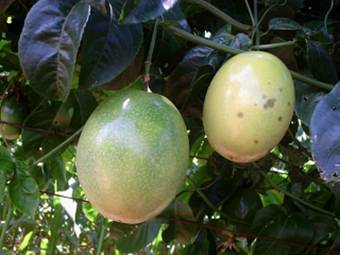
PASSIFLORA EDULIS VAR. FLAVICARPA
|
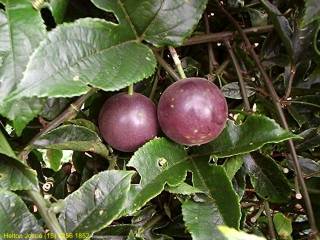
PASSIFLORA EDULIS - NATIVE |
|
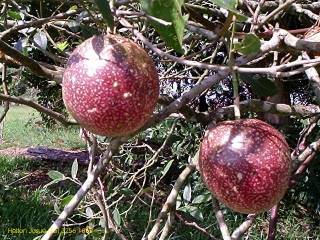
PASSIFLORA EDULIS – CROSSING OF TWO VARIETIES ABOVE
|
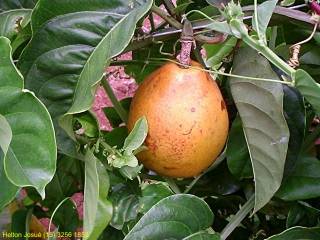
PASSIFLORA ALATA |
|

PASSIFLORA CINCINNATA |
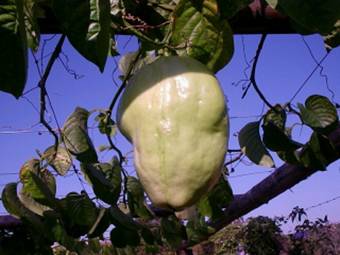
PASSIFLORA QUADRANGULARIS |
INDIGENOUS
NAME:
Maracujá
comes from the Tupi-Guarani and means "food in the bowl" formed because of the
fruit and the adjectives to the species mean Açú - "great" and Peroba "of bitter
bark."
ORIGIN:
The species of
P.
edulis
and P. edulis
Alata
occur in several forest formations in southeastern and southern Brazil,
whereas P.
cincinnata appears more often in the
savannah and northern Pantanal
and P.
quadrangularis
is endemic to the Amazonas Rainforest, Brazil.
Characteristics:
All are robust woody
climbers of
5
to
10
meters (17 to 33 feet)
in the length
with greyish brown woody basal stems, with
3 to 6
cm
in diameter.
The branches are glossy (not hairy), semi-angular dark green in color with
internodes of spaced
2
to
8.5 cm
of states with distance (laminar formation in the base of the leaves).
P. alata has simple and large leaves, characterized by a laminar tissue in the
branches and flowers with red petals.
The P.
edulis leaves has trilobates with 3 cuttings by means of blade (leaf) with white
flowers.
The P.
cincinnata has
leaves with 5 cuttings and flowers of deep
violet color.
P. quadrangularis
is also simple, and ribbed membranes notable,
but its branches are quadrilateral and their flowers have white veritcal petals
(male type does not have fertile stamens).
Planted in the
site of Frutas Raras:
With the exception of Passiflora quadrangularis that was planted in October 2006
and not bear fruit, the
other species are replanted every 3 years in the property.
Tips for
cultivation: Fast
growing climber that resists temperatures to 0°C (32°F) degree, and grows at
altitudes ranging from
400
to
1,000 m (1,333 to 3,333 feet)
sea level.
The soil should be deep, moist, neutral pH (6.6), with sandy or clay
formation (red soil).
You must plant at least 2 plants to get better cross-pollination and fruiting.
You must make an espalier with horizontal wires forming a mesh of
40 cm
(1 1/3 feet)
between wires to sustain
the plant.
The plants begin fruiting in the 1st year for most species, from the 2nd year
in the case of Maracujá Açu.
Propagation:
The seeds are flat,
recalcitantes (which loses the germinative power quickly).
Germination occurs in
30
to
45
days in any type of
substrate rich in organic matter, porous, left in a gray color. The seedlings
grow rapidly and in 4 months they can go to the final place.
In the nursery you should take care of the caterpillars of butterflies that
eat the plants completely.
It is better to plant
them at the beginning of summer, however, for the
Maracujá açú
is necessary to
make a cover to shade the plant in the first year after planting and to protect
from frost in winter.
Planting:
Can be planted in full sun
and shade in forests with large well spaced trees in this situation takes longer
to bear fruit.
Space between plants 4 x 4 m (13 x 13 feet).
The espalier should have 6 pillars, in the distances of
2 m
(7 feet) between them and
3 meters (10 feet)
between the pairs,
with height of 1.60 m (5 1/3 feet) to ease the harvesting of fruits.
Add the 400 g of lime pit and 1 kg of ash and
8 liters of
organic matter.
Water
every fifteen days during the first 3 months, if water is lacking.
Cultivating:
Make only forming pruning
and remove shoots that were grown at the base of the stem, manage the branches
by a mentor and continue tying the vine until the branches do not fall.
Fertilize with organic
compost, may be (4 liters) of poultry litter and mixed with 20 g of NPK 10-10-10
during September-October, distributed them
to
30 cm
from the stem.
Keep mulch around the
foot to maintain humidity.
Uses:
The fruits are consumed in
natura, with sugar or in the form of juices and other sweet dishes.
Flowering in
the site of Frutas Raras:
September to December.
Fruiting in
the site of Frutas Raras:
October to March.
LEARN MORE ABOUT THE CLASSIFICATION,
ORIGIN, HISTORY, STATEMENT OF PLAN, CULTURAL PRACTICES, MEDICINAL PROPERTIES
IN THE PORTUGUESE LANGUAGE
BUY THE BOOK
“COLECIONANDO FRUTAS”
Back to the
seedlist (English)
or back to Passifloraceae
(Portuguese)





